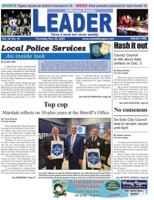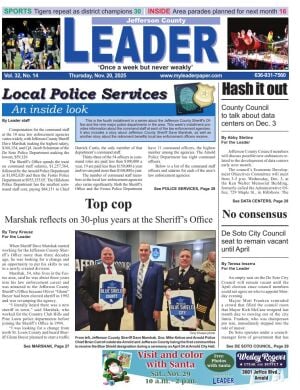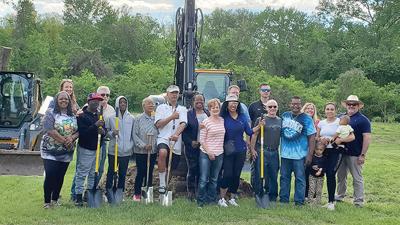A groundbreaking ceremony was held April 29 to mark the start of construction on the new Darrell “Hickey” White Park in Crystal City.
It will replace the park that closed a decade ago.
The new park is to be built on 2.22 acres along Little League Drive south of the Twin City Little League ballfields in Ward 1. The Twin City Levee Commission owns the property, which is on the south side of town, and has given the city permission to use it for the park.
The new park will include two collegiate-sized asphalt basketball courts, concrete sidewalks, a new asphalt parking lot and lighting.
City Administrator Jason Eisenbeis said construction on the new park officially began on May 1 and is expected to be completed in about 90 days, weather dependent.
“I presume the project will be complete by the end of July or sometime in August, if not sooner,” he said.
Eisenbeis said some trees were removed from the site in preparation for construction, most of them dead.
“I am sure we will plant several new trees throughout the park as projects are completed and as money allows.”
The original Hickey White Park was on Crystal Avenue and was closed in April 2014 after it had fallen into disrepair. The park board decided to stop maintaining it because its restroom building was not compliant with federal Americans with Disabilities Act standards and because the property often flooded.
The park was named after a Crystal City High School basketball player Darrell “Hickey” White, who died in 1977 of a blood disorder at age 18, shortly before graduation.
Crystal City Mayor Mike Osher and members of the Crystal City Council and park board attended the groundbreaking, as did several city employees, representatives from Jokerst Paving and members of White’s family, including Brian White, Hickey’s brother.
White said he’s excited for the new courts and believes it could revitalize the Crystal City School District’s basketball program.
“There’ll be a lot of kids who will probably go Division I out here,” White said.
He said the biggest key to future basketball success will be investing in teaching and mentoring basketball players as early as possible.
“We haven’t seen any real basketball the way we could see it. It’s all about training the kids early. When we start kids, we start them in the third grade, and by the time they get to eighth grade, everybody’s wondering why they’re getting beat by 50,” White said. “In order to master something early, you have to start early.”
Osher said he was pleased to see work begin at the park.
“Bringing this caliber of park back to the southern part of the city is a direct reflection of how good collaboration works. The park board and the city is in a good spot to make great things happen for our community.”




